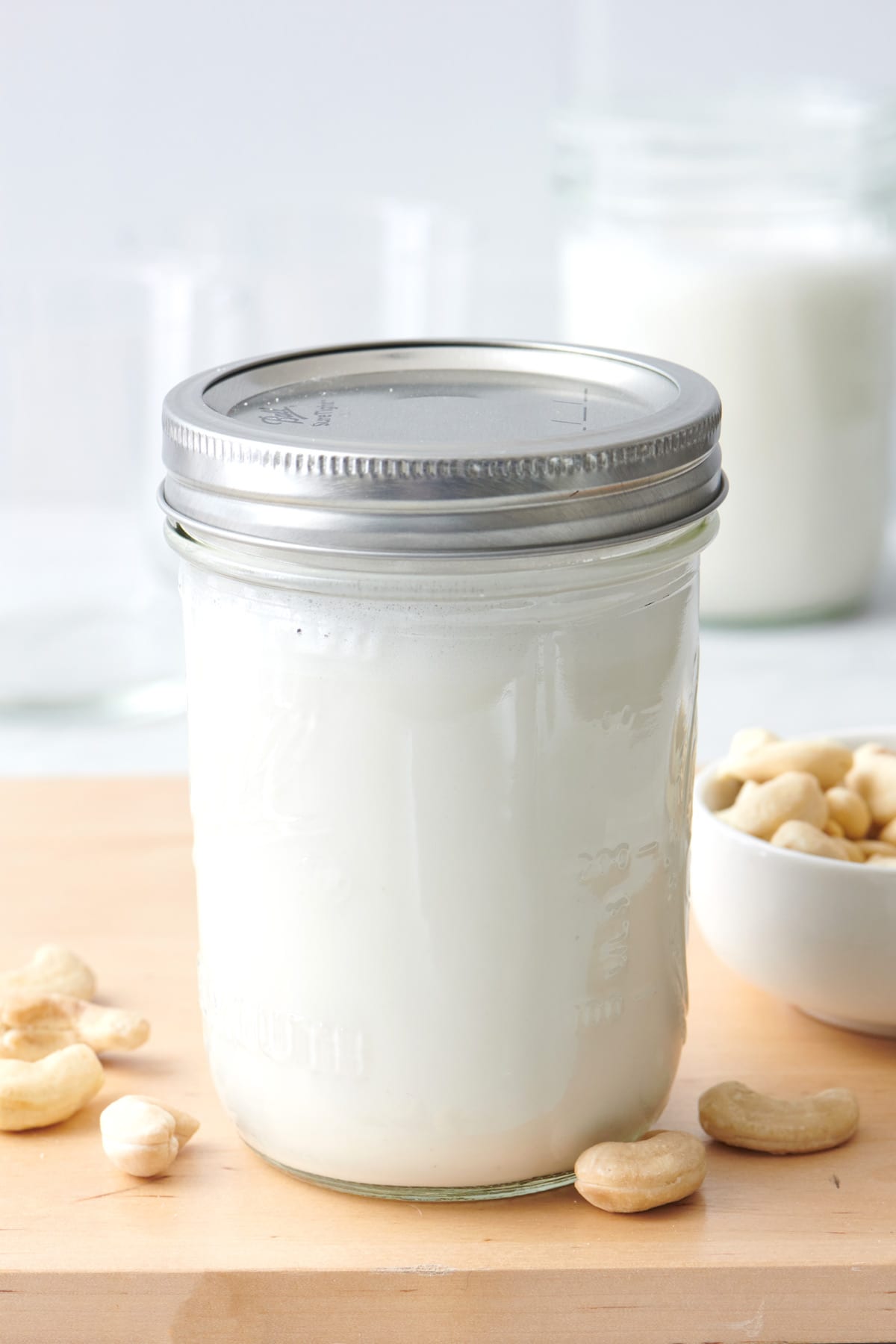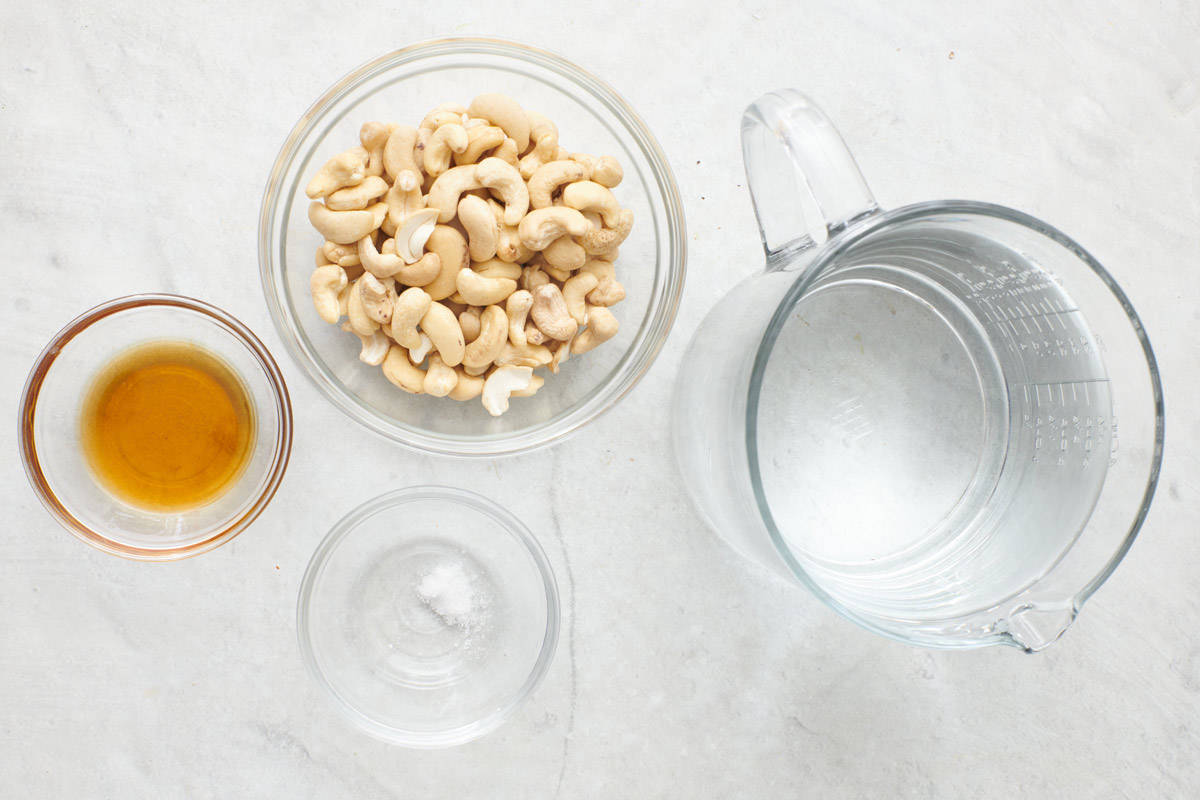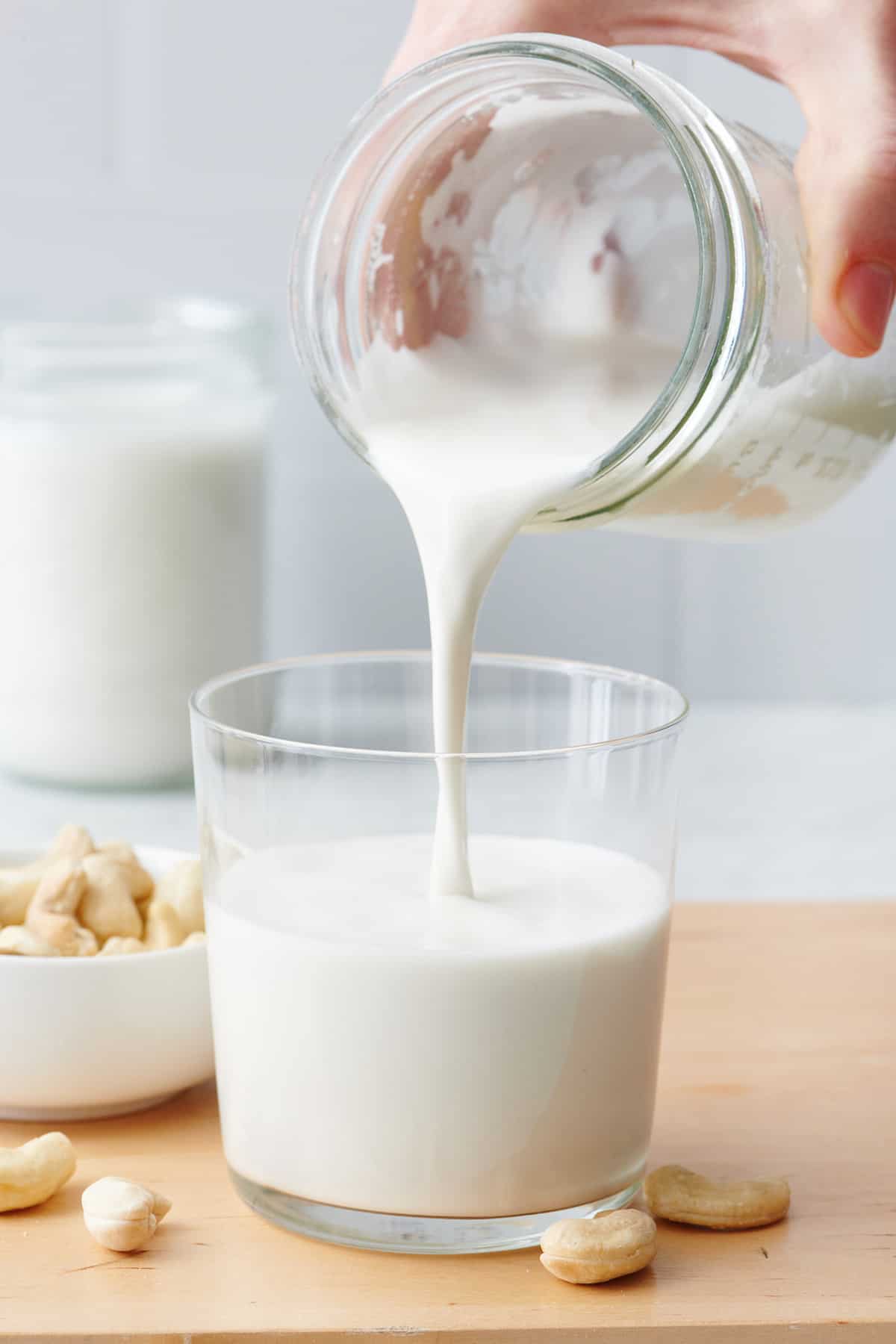This post may contain affiliate links. Please read our disclosure policy.
Making your own cashew milk at home is a surprisingly simple and rewarding process that can add a delicious, creamy twist to your coffee, cereals, or recipes. Unlike store-bought versions, homemade cashew milk is free from preservatives and can be customized to your taste preferences. Starting with just a cup of raw cashews, the transformation into a smooth and rich milk is almost magical. If you’ve been intimidated by the idea of making cashew milk, this easy tutorial will change your mind!

Jump to Section
What’s great about making cashew milk is the control you have over its thickness and flavor. You can adjust the water ratio for a thicker or thinner consistency, and play around with sweeteners, or even add vanilla for extra flavor. Straining the blended mixture through a nut milk bag or fine-mesh strainer ensures a smooth finish, perfect for sipping, cooking, or baking.
Why learn how to make cashew milk
- Cost-effective alternative. Good quality cashew milk is a pretty penny at the grocery store. Learning how to make cashew milk from scratch is a cost-effective way to enjoy this plant-based milk without breaking the bank.
- Quality control. Making your own cashew milk gives you full control over the ingredients. You can avoid the additives, thickeners, preservatives, and sweeteners found in some store-bought cashew milk.
- Customize to your taste preferences. Homemade cashew milk allows you to adjust sweetness, thickness, and flavor to suit your taste buds.
- Versatile uses. Never be caught without milk again. Whether you need some dairy-free milk to enjoy with your granola or pumpkin spice latte, cashew milk can satisfy your need for a creamy beverage any time!
Benefits of cashew milk
- Great dairy-free milk. Next to almond milk and oat milk, cashew milk is another excellent option for those who are lactose intolerant or who follow a vegan diet.
- Low in calories. A serving of unsweetened cashew milk contains approximately 25 calories compared to whole cow’s milk which has 125 calories.
- Packed with nutrients. Cashews are loaded with vitamins, and minerals, including magnesium, iron, potassium, and copper. Keep in mind that while homemade cashew milk is often more nutritious and void of thickeners, store-bought cashew milk may often be fortified with vitamin D and calcium.
- Contains heart-healthy fats. Cashew milk has monounsaturated and polyunsaturated fats, which may boost heart health.
Ingredients to make cashew milk

- Raw cashews: Be sure you are using unsalted, untoasted raw cashew nuts. Fresh cashews offer the most creamy texture and smooth consistency when soaked and blended, so try to find good quality fresh cashews.
- Water: You’ll need plenty of fresh filtered water to soak the cashews first and then blend everything together to make cashew milk.
- Salt: A pinch of salt enhances the overall taste.
- Maple syrup: Though optional, a hint of a healthy sweetener can enhance the overall taste and add a unique flavor profile.
How to make cashew milk
- Add raw cashews to a glass jar.
- Pour water into the jar and soak cashews for a few hours or overnight for best results.
- Drain and rinse the cashews thoroughly under cold water.
- Place the soaked and drained cashews in a high-speed blender. Add fresh water, salt, and sweetener, if using, to the blender.
- Blend on high speed until the mixture is completely smooth and creamy and there are no cashew bits left.
- Strain the blended cashew mixture through a nut milk bag, fine mesh strainer, or cheesecloth into a clean container or jar.

Tips for making the best cashew milk
- Make it more creamy: For a creamier consistency, you can adjust the water quantity to your preference (less water for thicker milk, more water for thinner milk).
- Straining is optional. For super quick cashew milk, feel free to skip the straining if using a high-speed blender. However, if you prefer an ultra-smooth consistency, straining through a fine mesh sieve is an easy additional step.
- Shake well before using. If you’re storing the cashew milk to enjoy for a few days, make sure you give it a good shake first because it may naturally separate, which doesn’t look appetizing at first.
- Do a quick soak if you’re short on time. Though I recommend doing the long soak, preferably overnight, for the creamiest nut milk, you can do a quick soak for quick cashew milk. Pour hot water over the cashews to kick start the soaking process, cover them, and let them sit for 30 minutes.
Recipes to make with cashew milk
- Cashew Milk Hot Chocolate
- Cashew Spinach Artichoke Dip
- Strawberry Banana Smoothie
- Cashew Milk Overnight Oats
How to store cashew milk
Keep cashew milk in a clean container like a glass jar with a tight-fitting lid, and store it in the refrigerator.
How long will cashew milk last in the fridge?
Cashew milk can be stored in the fridge for up to 4 days. Give the jar a quick shake before serving to redistribute any cashew pulp that may have settled to the bottom.
Can I freeze cashew milk?
Yes, you can freeze cashew milk! Pour it into freezer-safe containers, leaving at least 1″ of headspace to allow room for water expansion and freeze for up to 3 months. Thaw in the fridge and shake vigorously before serving. You can also freeze small portions in ice cube trays, and then transfer to a freezer-safe bag. This is especially convenient for smoothies or chilled creamy drinks.
Frequently asked questions:
Yes, you can add a touch more maple syrup to the blender or add a date or two to the cashews during the soak and include that in your blending. Keep in mind that cashews tend to lean on the sweeter side as far as nuts go, so always start low with additional sweeteners and adjust as needed.
Soaking the cashews, even for just a few hours, makes them softer and easier to blend with the water, lending an overall smoother texture. In addition, soaking the nuts also helps to break down anti-nutrients in the nuts, making them easier to digest.
Adding a few teaspoons of vanilla extract is always a good choice. You can also add a few pinches of cinnamon, pumpkin pie spice, or nutmeg to give a nice, warming flavor. Experiment with different flavors and see which one is your favorite!

Knowing how to make cashew milk from scratch prevents those last-minute trips to the grocery store! Besides, nothing beats homemade cashew milk made without any fillers or thickeners. With just a few simple steps, you can enjoy a luxuriously creamy beverage that suits your taste preferences just so!
More cooking tutorials:
- How to Make Cashew Cream
- How to Make Oat Milk
- How to Make Almond Milk
- How to Make Eggnog
- How to Make Cashew Butter
- How to Make Peanut Butter
- How to Make Almond Butter
- How to make Nutella
If you found this tutorial for How to Cashew Milk helpful or if you try any recipe on Feel Good Foodie, then don’t forget to rate the recipe and leave a comment below! It helps others who are thinking of trying out this tutorial and we would love to hear about your experience. And if you snapped some shots, share them on Instagram so we can repost on Stories!

How to Make Cashew Milk
Ingredients
- 1 cup raw cashews
- 4 cups water for blending
- 1 tablespoon maple syrup optional
- Pinch salt
Instructions
- Soak the raw cashews in water for at least 2-4 hours or overnight for best results.
- Drain and rinse the cashews thoroughly under cold water.
- Place the soaked and drained cashews in a high-speed blender. Add 4 cups of fresh water, sweetener (if using) and salt to the blender.
- Blend on high speed for about 1-2 minutes, or until the mixture is completely smooth and creamy and there are no cashew bits left.
- If you want your cashew milk to be completely smooth without any remaining cashew residue, you can strain it through a nut milk bag, fine-mesh strainer, or cheesecloth into a clean container or jar. Use within 3-4 days.
Notes
Nutrition
Nutrition information provided is an estimate. It will vary based on cooking method and specific ingredients used.





